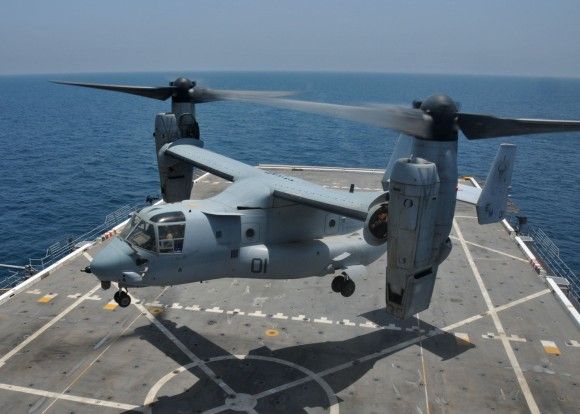The tender of the century – a choice by politicians or the military?
More and more sources are suggesting that the ironclad frontrunner in the tender on the middle range air and missile defense system Wisła is the Raytheon company, offering the Patriot system. The Defense Ministry itself admits though that in its current shape, the system does not meet the requirements. What’s likely is that also the upgraded version – the Patriot Next Generation - will not meet them, if it at all comes forth.
The Initial Tactical-Technical Objectives for the Wisła system are classified. However, looking at what the MoD has already revealed, it's clear that none of the air defense systems available for selection meets the objectives designed by the Polish, especially if the details revealed by the MoD's secretary of state Czesław Mroczek were taken into account (on February the 17th 2015 at the media briefing on the air and missile defense systems).
In fact, the MoD has admitted that such situation really occurs:"...at the day of completion of analyses only the two systems (the SAMP/T and the Patriot) have partiallymet the requirements (...) determined by the armed forces...".
Accordingly, no air and missile defense system exists at the moment, that meets all the criteria designed by the Polish armed forces.
The Wisła requirements, according to the MoD
Based on the statements by secretary Mroczek and the head of the air defense systems division in the Armament Inspectorate, Col. Romuald Maksymiuk - also present at the media briefing - the new air and missile defense system Wisła should be:
- a completed and operational system
- an all-round system, i.e. countering threats in full angle of azimuth of 360 degrees and in adequate elevation angle - hence a radar capable of surveillance in those azimuth angles and vertically launched missiles that may attack all targets around the launcher, regardless of the direction of attack
- a network-centric system, which stands in contradiction to point 1.
- a system equipped with directly – or near-directly -hitting missiles of "hit-to-kill" class (a direct destruction of the target’s warhead)
- a high-mobility system
The bidders have been additionally obligated to deliver, within three years since signing the contract, two systems in the current configuration, in order to launch the system's operation in Poland: "...with the premise that these two systems, after three years since signing of the contract, will be upgraded to a modernized configuration as the systems which will be introduced after the upgrade, i.e. after 2022...".
A complete and operational system
According to minister Mroczek’s statements, it is of key importance in the Wisła system selection, that the system is „complete and operational”, in order to avoid the risks related to continuing the work on the entire system. However, the Patriot New Generation offered to Poland is to a large extent a completely new system. It uses only the launchers and missiles of the old Patriot.
And for the needs of the NG version new items are to be developed: the fire control radar, the cheaper Low Cost Interceptor missiles, the software, the composition, the communications and vehicles. That system will have to be developed, tested and certified from the beginning. What's more, so far there is no full funding provided for the work. That means that it could be Poland who will de facto pay for the research and development works, while the proprietary rights for the new components will remain in Raytheon’s hands.
An all-around system
The Ministry of Defense is still upholding the requirement for 360 degrees target interception capability. Colonel Maksymiuk of the Armament Inspectorate has clearly emphasized that he has no intention to forgo this feature, but at the same time he still considers the purchase of the Patriot system, which is a sector one - not only due to the radars but also the missiles (they're not vertically launched but launched in the direction determined by the placement of the launcher).
Colonel Maksymiuk explained, that: "...the requirements expected from us may be fulfilled. Both the MBDA and Thales as the Eurosam consortium and the Raytheon company, offering the Patriot systems, have confirmed that during the technical dialogue".
The Ministry accepted the risk related to the development of the Patriot NG's all-around radar, funded so far mostly from Raytheon's own funds. (Let’s remind, these are the same risks, that were deemed as unacceptable by the Armament Inspectorate in regard to the advanced fire control radar Wisła, developed with the National Center for Research and Development funding since 2012).
It was known from the very beginning that the currently used by the Patriot system radar fire control set AN/MPQ-53/65 does not meet the Polish military objectives. Hence, an expansion of the radar was assumed, by adding two AESA wall arrays on the sides (with electronically shaped and controlled beam - active electronically scanned array). Each of these sheets could theoretically provide surveillance in 120 degrees angle, which may allow for a total electronic airspace scanning in 360 degrees angle.
Meanwhile, independent specialists are indicating that it is not feasible, because on the current technological level, there are four stationary wall-arrays needed for an all-around surveillance
Based on the laws of physics, the radar ranges and precision of coordinates determination depend on the area of the array’s aperture. At the same time, for a wall array, with the deflection of the electronically controlled beam, a phenomenon occurs of array gain decrease and the beam dilatation, the more the beam deflects from the array’s aperture perpendicular. That results in a decrease of the radar’s detection range in both angular coordinates in relation to the beam perpendicular to the array (where the range in of greatest extent).
This is by the way a fundamental deficiency of stationary AESA arrays. The result of smaller array size will be a decrease of detection ranges for objects of smaller cross-section (of stealth design) in terms of angles supported by those smaller arrays.
The issue of changes in detection picture, resulting from gain decrease and dilatation of the beam (the array’s characteristics form a shamrock-like picture) was tackled in the 1990’s by the Polish engineers, working on the R+D project of a multi-role radar with four wall-arrays and central transmitters. Under a code-name Wisła, later renamed for Brda, the work has produced the first Polish prototype of a multifunction radar with stationary arrays. Additionally, the Liwiec artillery radar, based on the Brda single wall-array, entered production.
The use of AESA arrays allows for a better control of gain decrease and beam dilatation (through shifting of average power for signals emitted in directions further away from the array’s perpendicular), but at the moment, the full elimination of the „shamrock” is impossible.
It is exactly the reason why today’s ship-based systems use four AESA arrays mounted on the quarter-decks (like the U.S. radar AN-SPY-1 used in the AEGIS system or the Chinese radar sets of Type 348 on Type 052C and 052D destroyers) or on masts (like the APAR radar set, developed by Thales Nederland company and used on the Dutch type De Zeven Provincien frigates, the German Sachsen type ships and the Danish vessels of Ivar Huitfeldt type).
But based on the computer image of the new Patriot NG radar it is clear that the side arrays will be significantly smaller than the main array. So with the design proposed for the new Patriot NG radar, we’ll be likely dealing with limited coverage to the sides and to the rear. Hence, the detection zones will be significantly reduced in comparison to the main array (especially for smaller objects). The Patriot NG will be a radar set of reduced operational capabilities – for the smaller arrays.
The problem is also in funding of the new radar development and its final cost. The wall arrays are the most costly element, and now every radar set is to be equipped with three such devices. Additionally, so far the main reason for modification of the Patriot fire control station's was primarily the aim for enhancing its unsatisfying reliability. And for that purpose are the Pentagon's funds chiefly directed. The remaining work is most likely realized by the Raytheon company from its own funds.
While talking exclusively about the radar, one forgets that the "all-around" requirement refers equally to the missile launchers. And some experts have noticed that in the Patriot NG system, particular launchers must be subordinated to the specific arrays, completing the radar set.
With that kind of composition, particular fire units (launchers) would be able only to counter targets approaching directly the given array, covering the sector in which the targets are located.
A network-centric capability
The key element in the network-centric concept is the ability to use the fire control radar of the „neighboring” battery to guide the interceptor missile. In case of both the SAMP/T and the Patriot systems, this objective could be met, but only in future. With that, the Ministry’s representatives seem to be aware that fulfilling this objective by the Patriot may be more difficult than providing engagement capability in the full-angle.
This was proved for instance by Col.Maksymiuk's words, who said that Patriot: "...is also subject to periodic upgrades, one of which will be mounting a new radar to the system and further on, achieving the network-centric capability...". He did not say however what the term "further on" means for the system's implementation timeframe.
Additionally, with the „command” guidance technology that was used, the basic PAC-2 missiles of the Patriot system need to be controlled in the coverage area of the main sector of the nearest radar. With that, implementation of network-centric approach is simply impossible.
According to the military objectives, Poland needs a missile system of an open architecture and "plug-and-fight" functionality. But as experts indicate, the Patriot uses a specific software of JOVIAL type and a closed architecture Patriot Data Information Link, dedicated to a specific weapon system.
Currently, all indicates that due to the cost-reduction need, the JOVIAL software is to remain in the PNG system offered to Poland, which means that the old system's architecture will be left untouched. What makes matters worse, the JOVIAL coding was used effectively only in the Patriot system in the past 30 years. Hence, all that is needed to develop the system is maintained mainly by Raytheon company and is subject to proprietary intellectual rights.
Introduction of any changes to this software is impossible without the Raytheon's software developers. Another obstacle is the hardware, which went through a number of generational developments since the Patriot system was made a few decades ago. Introduction of new, fast processors and large capacity memory would require a complete re-design of the system, and this is something that Pentagon does not want to spend sufficient money for.
In the United States the work has begun on the network-centric Integrated Air and Missile Defense with the Integrated Battle Command System (IBCS) - developed by Northrop Grumman company. The PAC-3 MSE missile by Lockheed Martin was selected (which is already in production and operates under the "hit-to-kill" rule). No decision has been made about the radars and launchers which will be used in the IAMD framework.
Mobility
So far, the least is known about the mobility requirements. Colonel Maksymiuk has stated only that: "...precise requirements are classified, but I'd say that mobility requirements are important...". Despite that "importance" the Patriot system was not rejected by the MoD, despite it's not a mobile but only a transportable system, and in fact with limits.
And it's not only the question of quick displacement from the firing position, but also transportation challenges generally. For instance, Poland does not have the aircraft capable of airlifting the Patriot and PNG systems. Unfortunately, the C-130's can not be used for that purpose. Moreover, as it was calculated, to airlift a single U.S. Patriot battalion, approximately 90 large C-17 transport aircraft are needed. Hence, seaways are mostly used for shipping the system, which is hardly acceptable in Polish conditions (we don't have adequate vessels).
It is equally difficult to ferry the system on land. It is effectively impossible that the Patriot keeps the pace with the moving army units. It's enough to say that a U.S. Patriot battalion may consist of four firing units, 576 troops, 226 oversized vehicles and 109 trailers. The number of launchers in case of Poland may increase, to provide the required all-around cover.
It also takes a long time to shift from transit-mode to battle-mode and vice-versa. It may prove very difficult to get away from the potential enemy's response by a quick maneuver. The sector launchers would have to additionally directed by the soldiers in real time to the sector, from which at a time being an air attack is expected and which will be covered by the specific wall-array of the PNG radar.
The system also requires good roads, due to the weight and dimensions of its components. The radar only weighs around 36 tons with the transport system and in addition, the system is 17 meters long. And in the Polish geopolitical situation, the lack of quick-displacement capability to leave the firing post means effectively a very quick destruction of the deployed weapon system. What was noticeable during the recent Patriot system exercises, the transport was only possible after building of especially designed tarmac-paved roads. Russia’s operations in Ukraine should give us a lot to think about in that respect.
Is the MoD's defined Wisła at all buyable?
Poland undoubtedly needs the air and missile defense systems meeting the initial tactical and technical objectives that were adopted. In the current geopolitical situation, in case of threat, operation of a wide range of air attack means should be considered and sufficient capability of counteraction and protection be provided.
But it needs to be also realized, that the scale of problems that need to be solved by developing the air defense system from scratch is so big, that there's no way to keep the delivery deadline determined by the Ministry (in 2022). The program’s implementation deadline may be extended further, if the Ministry remains adamant on the new software requirement.
One may get the impression that the deciding role in the largest tender in the current Technical Modernization Plan may be played by short-term political factors. Still, one should remember, that the selection of the mid-range air defense system will to a large extent determine the security of the current and future generations of Poles. It seems that in the current situation, the conditions favoring a specific solution should be revealed – both technical and political ones, so that the public opinion was aware of the realities in which decisions are being taken.
One should avoid the situation, in which Poland will be left with only sector and largely ineligible Patriot systems, and still, in small numbers. The elaborated solution should to the largest extent possible provide for fulfillment of the initial requirements, if not in full, in a relatively short timeframe.




